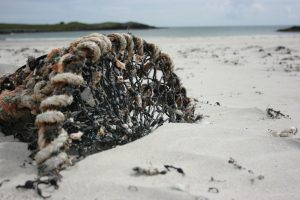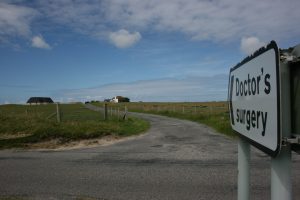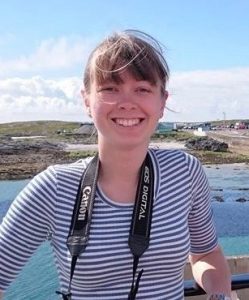I am not a windsurfer, I don’t know anything about crofting, and I don’t know what a corncrake is; I have also never listened to a song by Skipinnish, so I might be forgiven for never having heard of the Isle of Tiree. When the time came to think about an elective, I had no ideas. On a panicked Saturday afternoon, I remembered my interest in rural general practice, and after a couple hours of ‘googling’ I was set on an elective to Scotland, specifically the Scottish Islands. Long story short, seven months later, I was climbing aboard a tiny Twin Otter plane in Glasgow, bound for the Isle of Tiree.
 Tiree is the most westerly of the Inner Hebrides (a group of islands off the west coast of Scotland). It is relatively small (three miles wide, twelve miles long), and unusually for the Hebrides, is very flat (the highest point is 141m). To some, it is known as the ‘Hawaii of the north’ as it gets some of the highest levels of sunshine in the UK. The houses are spread out in little clusters, there are very few signs, no road names, no house numbers, no street lights, and many of the roads come to dead ends; making navigation a little difficult. However, the Island is also popular with tourists, who come to enjoy the beaches, windsurf, and see the wildlife. Tiree has the biggest island population of the elusive bird, the corncrake, which can be heard all over the Island, but is rarely seen. The main employment on Tiree is crofting (or farming). Many islanders have long family ties to the area and within the small population everyone knows each other. The locals are wonderfully friendly; the older generation in particular are keen to share the history of the island, talk about crofting, and teach a few words of Gaelic (40% of the population speak this as a first or second language). I didn’t expect a language barrier, and yet I’ve seen at least 10 consultations entirely in Gaelic!
Tiree is the most westerly of the Inner Hebrides (a group of islands off the west coast of Scotland). It is relatively small (three miles wide, twelve miles long), and unusually for the Hebrides, is very flat (the highest point is 141m). To some, it is known as the ‘Hawaii of the north’ as it gets some of the highest levels of sunshine in the UK. The houses are spread out in little clusters, there are very few signs, no road names, no house numbers, no street lights, and many of the roads come to dead ends; making navigation a little difficult. However, the Island is also popular with tourists, who come to enjoy the beaches, windsurf, and see the wildlife. Tiree has the biggest island population of the elusive bird, the corncrake, which can be heard all over the Island, but is rarely seen. The main employment on Tiree is crofting (or farming). Many islanders have long family ties to the area and within the small population everyone knows each other. The locals are wonderfully friendly; the older generation in particular are keen to share the history of the island, talk about crofting, and teach a few words of Gaelic (40% of the population speak this as a first or second language). I didn’t expect a language barrier, and yet I’ve seen at least 10 consultations entirely in Gaelic!
Tiree Medical Practice is the only surgery on the island, serving the 710 residents, along with the tourists (which in summer, can treble the population). The surgery is manned at any one time by one GP, two reception staff, a practice nurse, and the district nursing team (the GP is on 24 hour call for emergencies), and acts as a ‘dispensing practice,’ meaning there is no pharmacist on the island, and all prescribed medicines are dispensed from the reception. Other medical services on the island are fairly limited. The nearest hospitals are Glasgow or Oban on the mainland. The local nursing home has the facility to provide a medical bed, if needed. A dentist, podiatrist and physiotherapist visit every four to six weeks, and a psychiatrist three times a year. There is an ambulance on the island, but no paramedic.
Day to day surgeries run pretty much as they would on the mainland, although a ‘drop in’ system is used for some clinics. Problems seen are much the same as in a regular general practice, but with the added challenge of persuading some people to travel to the mainland for further tests or outpatient appointments. A round trip to Oban takes eight hours by ferry, and involves an overnight stay. It is possible to go by plane, and transport costs are covered, but not everyone is keen on leaving the island, especially in bad weather when you can get stuck on the mainland.

I learnt very quickly just how isolated Tiree can feel in an emergency. Less than one week into my elective, we had a call to a single vehicle road traffic accident, with one casualty, involving a car that had crashed into a ditch. In a normal situation, a GP would probably call for a paramedic, but on Tiree, they co-ordinate the emergency. Luckily, there are other people to call upon: the ambulance team, the fire service, the policeman (there is only one), and the nurse were called. With a head and possible spinal injury, getting our patient to the hospital was a priority, however on Tiree, hospital admissions are never easy. After the fire brigade had extracted him from the car, the ambulance transported him to the surgery, where the treatment room acted as a temporary A&E. There, better assessments could be made, treatments given, and the air ambulance was called.
Hoping your patient doesn’t deteriorate, hoping the weather doesn’t close in, hoping that the air ambulance isn’t much longer on its current call, the wait can seem to last forever. Four hours after we arrived at the scene, we were at the airport, and in an hour, our patient was at Glasgow A&E – on Tiree, the ‘golden hour’ is something they can only dream of. Over the next six weeks, I became much more familiar with the protocol for ordering an air ambulance. At one stage, I saw four in four days.
Whatever I expected from Tiree, I didn’t expect the welcome I received, I didn’t expect to fall in love with Scotland, and I certainly didn’t expect to be considering a career in the Hebrides. I still have a lot to learn. I have yet to try windsurfing, my Gaelic only consists of a couple of words, and I still need a map to find my way around. But I know what a croft is, I can recognise a corncrake’s call and most importantly, I’ve had my first taste of rural general practice. Wherever the next few years take me, whatever my career path, I know this will not be my last time on the Isle of Tiree.
Catherine would like to thank the people of Tiree for her warm welcome and hospitality during her stay and hopes she can return soon.
 Catherine Lawrence is a 5th year medical student at HYMS, budding GP and part-time balloon modeller. When not hard at work, she can be found hiking, bouldering or camping with her Cubs or Guides.
Catherine Lawrence is a 5th year medical student at HYMS, budding GP and part-time balloon modeller. When not hard at work, she can be found hiking, bouldering or camping with her Cubs or Guides.

